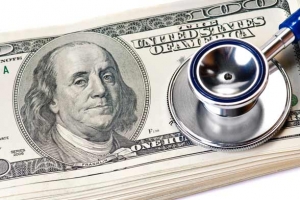Out-of-pocket expenses
Each year, the Centers for Medicare and Medicaid Services (CMS) adjusts the premiums and out-of-pocket expenses for Medicare beneficiaries. Below is a summary of the 2019 costs.
Premiums
Part A: Most individuals don't have to pay a premium for Part A, however, those that do will generally have to pay $437 per month in 2019. This is an increase from $422 in 2018.
The Internal Revenue Service (IRS) issued Revenue Procedure 2017-37 last week with information on the Health Savings Account (HSA) and qualified high-deductible health plan (HDHP) limits for 2018.
These limits are updated annually and reflect cost-of-living adjustments.
HSA contribution limits
The Affordable Care Act (ACA) requires non-grandfathered plans to impose limitations on out-of-pocket expenses for essential health benefits starting in 2014. The out-of-pocket limitations will be capped next year at $6,350 for single coverage and $12,700 for family coverage.
However, some self-funded plans will be exempt from this requirement until 2015. The guidance indicates that self-funded plans contracting with multiple service providers can delay this requirement for one year.
The U.S. Department of Health and Human Services (HHS) posted final regulations about the deductible and out-of-pocket limitations to the Federal Registrar on February 25, 2013. Section 1302(c) of the Affordable Care Act (ACA) specifies that the maximum deductible for a qualified insurance plan cannot exceed $2,000 for single coverage and $4,000 for family coverage.
If you have a flexible spending account (FSA), the year-end FSA frenzy is here. FSA participants that may have contributed too much money may be in panic mode, but it does not have to be that way for you. Let’s take a look at some ways to use your FSA money.
Visit your:
- Doctor to make sure to get all immunizations done.
- Dentist/Orthodontist to get a check up on those pearly whites.
- Optometrist to get an eye exam! Buy a new pair of eyeglasses, prescription sunglasses, contact lenses, or even stock up on contact lens solution.
- Dermatologist to get prescriptions, such as acne treatments.
More and more, employers are starting to offer high-deductible health plans (HDHPs) in their benefits program. Correspondingly, the rate of employees enrolled in a HDHP has grown year-over-year. Even though this isn’t the standard health plan option you might be used to, here are four reasons to be thankful for your HDHP this enrollment season:
- Covers 100% - Just like a traditional health plan, basic preventive services such as vaccinations and wellness exams are covered at 100%! You can stay proactive with your health care and save money.







